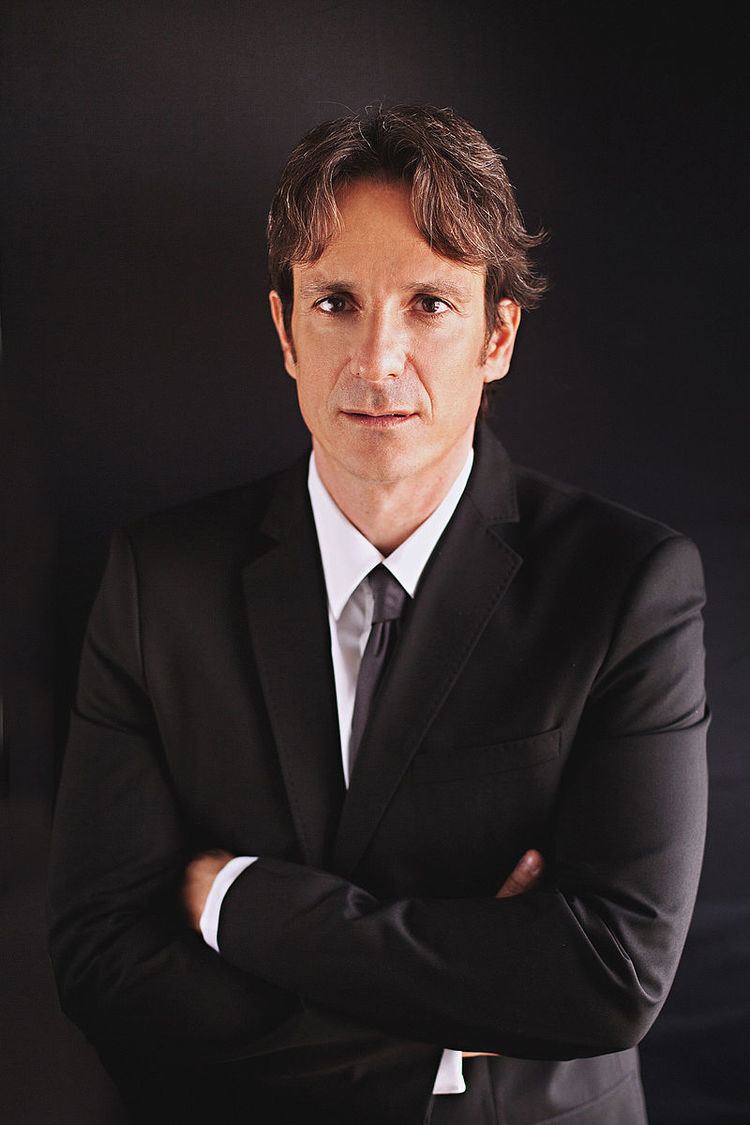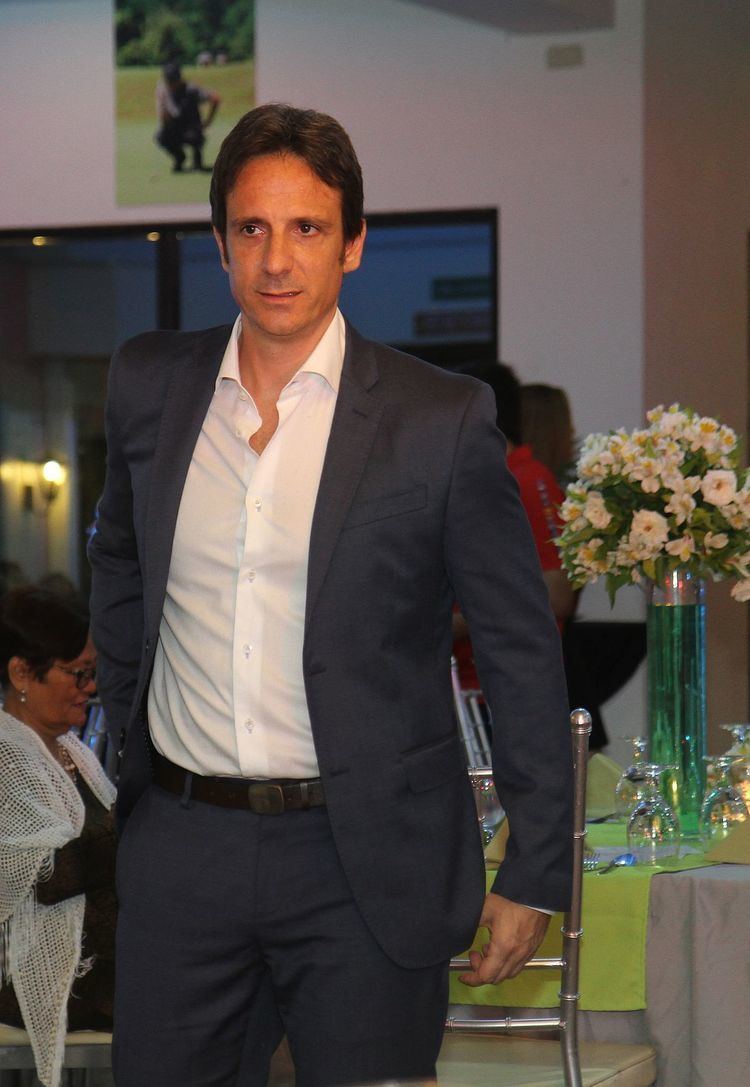Nationality Italian | Name Romolo Nati | |
 | ||
Occupation Executive Chairman and CEO of Italpinas Development CorporationVice Chairman of Constellation Energy CorporationExecutive Chairman and CEO of Primavera Residences Known for Best Mixed-use Development in the Philippines, Asia Pacific Property AwardsOne of the Philippines’ New Business LeadersOne of the Best Condo Development in the Philippines, “Primavera Residences” Education Sapienza University of Rome Parents Angela Gusella, Giuseppe Nati | ||
Idc ceo romolo nati on italian national tv
Romolo Valentino Benedetto Nati, (born February 14, 1968) known as Romolo Nati or RVN, is a multi-awarded Italian architect and businessman with interest in sustainable development (energy and real estate). He is the current Executive Chairman and CEO of Italpinas Development Corporation (IDC), an Italian-Filipino real estate development firm which held its initial public offering (IPO) on Monday, December 7, 2015 that specializes in the design and development of sustainable buildings. He is the Vice Chairman of the Philippine renewable energy company Constellation Energy Corporation (CEC). Nati is also the Chairman of IDC’s official leasing company Damiani Property Management and Services, Inc.
Contents
- Idc ceo romolo nati on italian national tv
- Shopping mall in estonia romolo nati and associates architects http www itaproject eu
- Italpinas Development Corporation
- Constellation Energy Corporation
- Damiani Property Management and Services Inc
- Biomimicry
- High Performance Design
- Influences
- Works and Design Concepts
- Honors and awards
- References

Shopping mall in estonia romolo nati and associates architects http www itaproject eu
Italpinas Development Corporation
In 2007, he visited the Philippines to introduce green architecture as a realistic approach to development that could be applied in the South East Asian setting. He was then introduced to Atty. Jojo D. Leviste, III, a Sydney-based Filipino lawyer and in 2009, the two teamed up and founded Italpinas Euroasian Design and Eco-development Corporation (ITPI), later on renamed Italpinas Development Corporation (IDC), with him as Executive Chairman and Chief Executive Officer and Leviste as President.
The company’s first project is Primavera Residences in Cagayan de Oro City, Philippines which consists of a twin tower mixed-use condominium development situated inside Pueblo de Oro Business Park.
Constellation Energy Corporation
Also founded in 2009, Romolo is Vice Chairman of Constellation Energy Corporation (CEC), a renewable energy company that focuses in acquiring, financing and developing small to medium-scale renewable energy projects across the Philippines.
Damiani Property Management and Services, Inc.
Romolo V. Nati is also the Chairman of Damiani Property Management and Services, Inc. (DPMSi), a company engaged in asset and property management of real estate projects.
Biomimicry
Inspired by natural living structures, Nati based his designs on Biomimicry. He also took an interest in sustainable development, citing a strong need for building cities and creating shelters without harming nature.
Biomimicry is an approach to innovation that seeks sustainable solutions to human challenges by emulating nature’s time-tested patterns and strategies. Since living organisms, through natural selection, is a result of millions of years of evolution, by imitating natural living structures, biomimicry can help solve complex human problems such as creating effective human structures capable to optimize their performance and the use of natural resources.
One early example of the use of biomimicry is Leonardo da Vinci (1452–1519) who studied birds to enable human flight and create a “flying machine”. The Wright Brothers in 1903 also derived inspiration for their aircraft invention by studying pigeons in flight.
In architecture, biomimicry has evolved into a contemporary philosophy (see also Biomimietic Architecture).
High Performance Design
Nati’s designs are characterized by fully integrating renewable energy features – passive for saving, and active for generating power – with architecture. This integration begins during the conceptualization process and extends to design up to construction and building maintenance. The process is created using performance-based design strategies that make use of parametric and generative architectural software.
At the onset of the design process is a detailed analysis of the existing data of natural weather conditions of the site location, optimizing the use of natural elements to shape the design of the building—the same “thinking model” used by nature. In the same manner that a sailboat is designed to take advantage of the wind and waves, Nati espouses the idea that a building should adhere to the same concept, by optimizing the natural elements to create an efficient and high performing building design.
Influences
At 16 years old, Nati's interest in architecture grew when he flew to Hong Kong, New York City, Chicago, Singapore and other major cities following his father who used to work in ALITALIA (Italian Airlines). His early travels developed his interest in modern architecture, instilling a great admiration for skyscrapers. Influenced by Leonardo da Vinci and biomimicry, he also continued developing his architectural style from his appreciation of the elegant and highly-effective function of nature. He also gained insights from Japanese architecture, North-European architecture, Organic architecture and Italian rationalism.
His designs are greatly influenced by distinguished architects such as Lebbeus Woods, Renzo Piano, Kazuyo Sejima, Frank Lloyd and Luigi Moretti.
In Philippine architecture, he is partial to the natural designs of the Bahay Kubo, Nipa huts, and the spontaneous architecture of informal settlers in Tondo, Manila.
